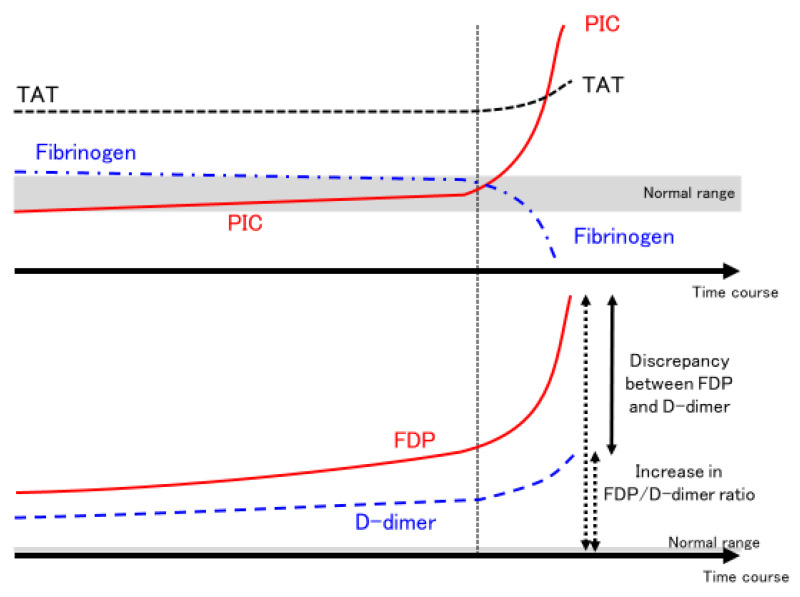Figure 2.
Dynamic changes in fibrinolytic pathophysiology in some severe COVID-19 cases. The time course of coagulation markers in COVID-19 patients with sudden enhancement of fibrinolytic activation and severe bleeding are shown. In some severe COVID-19 patients, PIC suddenly increases (PIC surge) at a certain point (around 7–10 days after admission to the ICU, as indicated by the vertical dotted line). At the same time, fibrinogen decreases significantly, but the degree of increase in TAT does not change significantly (upper panel). Meanwhile, FDP increases significantly, while D-dimer increases only mildly. Both solid and dotted arrows indicate the FDP/D-dimer ratio (lower panel). As PIC increases and fibrinogen decreases, discrepancy between FDP and D-dimer or the FDP/D-dimer ratio increases. These changes in coagulation markers are suggestive of enhanced-fibrinolytic-type DIC. Abbreviations: COVID-19, coronavirus disease 2019; ICU, intensive care unit; PIC, plasmin–α2 plasmin inhibitor complex; TAT, thrombin–antithrombin complex; FDP, fibrin/fibrinogen degradation products; DIC, disseminated intravascular coagulation.

